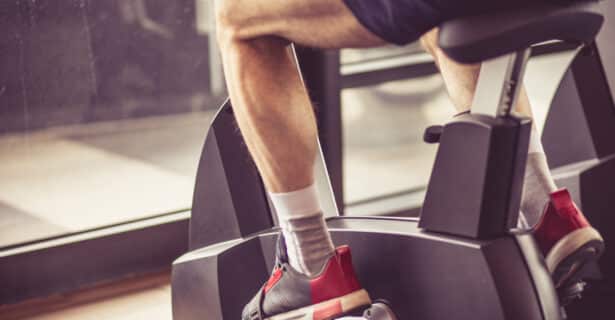
Exercising with Health Issues
Exercise with Health Issues
Everyone can exercise. It is never too late to start. Talk to your doctor and exercise team to make sure your program is safe for you if you have the health issues listed below.
If you have lost feeling in your feet:
- Check your feet for sores often. If you do not have much feeling in your feet, you may not notice sores.
- Talk to your doctor if you have sores on your feet.
- Do not do weight-bearing exercise like walking if you have open sores on your feet. Instead, use a stationary (exercise) bike until the sores have healed.
If you have eye problems, follow the tips below to keep your body safe:
- Exercise on a stationary (exercise) bike if you have poor eyesight.
- Have your eye pressure checked by your eye doctor. Your eye doctor will check for glaucoma and ensure it is safe for you to exercise.
- If you have retinopathy, avoid resistance training. Resistance training can make your retinopathy worse. Discuss your exercise program with your eye doctor.
There are many exercises you can do depending on the affected body part:
- biking on a stationary (exercise) bike
- using an arm ergometer
- swimming
Many of the resistance training exercises still work well. Talk to your exercise team for your custom program.
If you suffer from knee, back or shoulder pain, you can still exercise. Follow the tips below:
- Change or avoid the exercises that use your injured body part.
- Only do exercises that do not cause any pain.
- Do exercises in a position that feels right for you.
- Perform exercises with the correct technique (use the proper method).
Talk to your physiotherapist or exercise team to find exercises for your specific needs.
Exercise and movement of the joints help improve arthritis pain.
It is important to progress your exercise slowly.
- See how you feel 1 to 2 days after an exercise session. Listen to your body.
- If you have joint pain, stop your exercise and take a rest day. Try your exercise again the next day.
Charcot’s foot is a condition that weakens the bones in your feet. Follow these tips for exercise:
- Avoid activity that you do not need to do. You can do many resistance training exercises sitting in a chair.
- Use a stationary (exercise) bike or an arm ergometer for exercise.
Talk to your doctor or exercise team for help.
A good time to exercise will vary if you have dialysis throughout the week. It will depend on your symptoms and your energy level. To get started with exercise:
- Do small sessions of exercise. Try 5 to 10 minutes of exercise at a level that feels right to you.
Talk to your doctor or exercise team for help.
If you have heart disease, speak with your doctor before you start an exercise program.
Angina is the pain or discomfort that occurs when your heart does not get enough oxygen. Angina may feel like:
- chest pain
- chest tightness
- arm pain
- jaw pain
- back pain between your shoulders
- shortness of breath
Stable angina is angina that happens at a known intensity level of exercise.
- Keep your exercise below this level to avoid angina symptoms.
- Talk to your exercise team about the right level of exercise for you.
- Have your nitroglycerine with you while you exercise.
- Know what to do if you have angina symptoms while exercising.
- Slow your exercise pace and stop exercising.
- Take your angina medicine as prescribed.
If your symptoms do not resolve, get immediate medical attention. If you live in Ontario, call 911.
Visit the Cardiac College™ website for more detailed information about heart disease »
Chronic Obstructive Pulmonary Disease (COPD) is a disease that causes restricted air flow to your lungs.
With COPD, shortness of breath will limit your exercise. Your exercise depends on how much your lungs are affected. To exercise safely:
- Exercise at a level where your breathing feels right. Stay within this level.
- Start with small sessions of exercise, about 5 to 10 minutes long.
Talk to your doctor or exercise team for help.